
Proper sanitation is vital in commercial kitchens for preventing foodborne illnesses, ensuring compliance with health regulations, and protecting your customers and reputation. However, with so many sanitizing products available, it can be challenging to determine which ones are both functional and safe for use in foodservice operations. Below, we outline the tools and knowledge needed to maintain a hygienic environment in your commercial kitchen, while staying compliant with food safety standards.
Shop All Surface Sanitizing and Disinfecting ChemicalsTypes of Food Safe Sanitizers
The three most commonly used food-safe sanitizers in the industry are quaternary ammonium compounds (quats), chlorine-based sanitizers, and iodophors. Whether you’re sanitizing food contact surfaces, equipment, or utensils, knowing the strengths and limitations of each type will help you make informed decisions to ensure both safety and compliance in your foodservice operation.
1. Quaternary Ammonium Compounds (Quats)
Quaternary ammonium compounds, commonly called quats, are among the most widely used sanitizers in commercial foodservice operations. Known for their stability, effectiveness, and ease of use, quats have become a go-to choice for sanitizing food contact surfaces, equipment, and utensils.
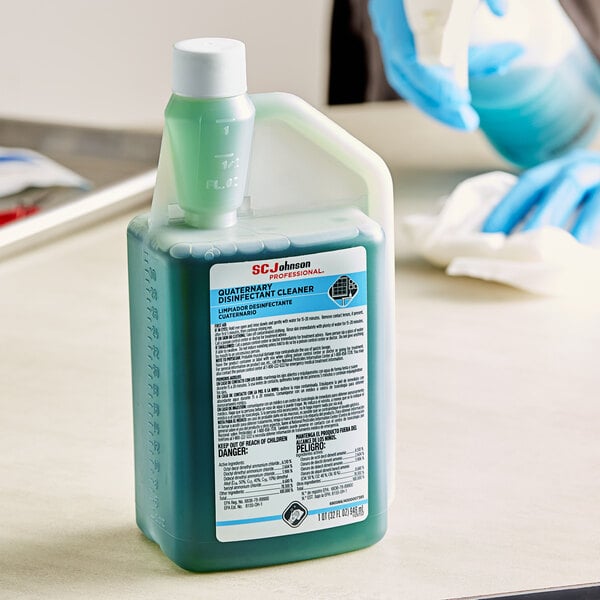
How Do Quats Work?
Quats are positively charged compounds that attract and disrupt the negatively charged cell membranes of bacteria, viruses, and fungi. This action effectively destroys harmful microorganisms, making quats a powerful tool for maintaining a hygienic environment in foodservice settings.
Benefits of Using Quats
- Broad-Spectrum Effectiveness: Quats produce results against a wide range of pathogens, including bacteria, viruses, and molds.
- Non-Corrosive: Unlike some other sanitizers, quats are non-corrosive to metals, making them safe for use on stainless steel equipment and surfaces.
- Stable and Long-Lasting: Quats remain potent for extended periods, even in the presence of organic matter, though proper cleaning before sanitizing is still essential.
- Odorless and Non-Irritating: Quats are generally odorless and less irritating to the skin compared to other sanitizers, making them more user-friendly for staff.
2. Chlorine-Based Sanitizers
Chlorine-based sanitizers are a staple in many commercial foodservice operations due to their affordability, effectiveness, and versatility. Commonly used in the form of sodium hypochlorite (bleach), these sanitizers are highly effective at killing a wide range of pathogens, making them a popular choice for maintaining food safety.
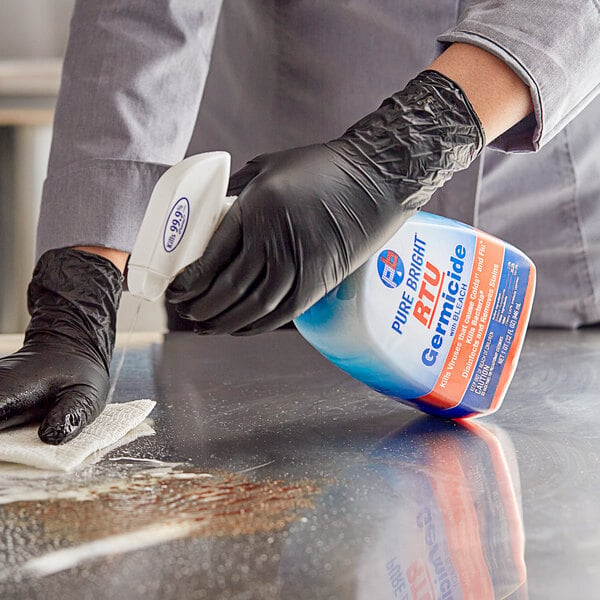
How Do Chlorine-Based Sanitizers Work?
Chlorine works by breaking down the cell walls of microorganisms, disrupting their cellular functions, and ultimately destroying them. This process happens quickly, making chlorine-based sanitizers ideal for operations that require rapid turnover of equipment and surfaces.
Benefits of Using Chlorine-Based Sanitizers
- Highly Effective: Chlorine-based sanitizers are proven to kill a wide range of bacteria, viruses, and fungi, including common foodborne pathogens like E. coli and Salmonella.
- Fast-Acting: These sanitizers require a relatively short contact time, as little as seven seconds, to be effective. This makes them ideal for high-volume foodservice operations.
- Cost-Effective: Chlorine-based sanitizers are inexpensive and widely available, making them a budget-friendly option for businesses of all sizes.
3. Iodophors
Iodophors are a unique class of sanitizers widely used in commercial foodservice operations, particularly in environments where gentleness and potency are equally important. These iodine-based sanitizers are known for their ability to kill pathogens while being less corrosive and irritating compared to other sanitizers.
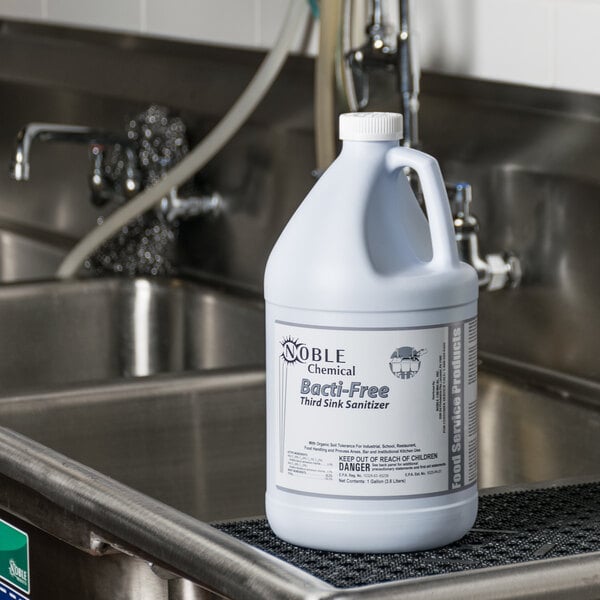
How Do Iodophors Work?
Iodophors work by releasing free iodine, which penetrates the cell walls of microorganisms and disrupts their protein and nucleic acid structures. This action effectively kills bacteria, viruses, and fungi.
Benefits of Using Iodophors
- Gentle on Surfaces: Unlike some other sanitizers, iodophors are non-corrosive and less likely to damage metals, plastics, and other materials commonly used in foodservice equipment.
- Effective at Low Concentrations: Iodophors are highly potent at low concentrations, making them cost-efficient and easy to use.
- Visible Indicator: Iodophors have a distinct amber color, which serves as a visual indicator of their presence and concentration. When the color fades, it’s a sign that the solution needs to be replaced.
Factors That Affect Foodservice Sanitizers
In any foodservice operation, the efficacy of sanitizers is critical to maintaining a safe and hygienic environment. However, several factors can influence how well a sanitizer performs, regardless of its type. Understanding these factors is essential for ensuring that your sanitizing practices are both effective and compliant with food safety regulations.

- Concentration: The concentration of a sanitizer is one of the most critical factors in its potency. Using too little can render it ineffective while using too much can leave harmful residues or damage surfaces.
- Water Temperature: Most sanitizers work best within a specific temperature range, with quats and Iodophors performing best between 75 and 120 degrees Fahrenheit. Chlorine-based sanitizers are optimal at temperatures slightly below 120 degrees Fahrenheit.
- Water Hardness: Hard water, which contains high levels of minerals like calcium and magnesium, can interfere with the potency of certain sanitizers, particularly quats. If your water supply is hard, consider using a water softener or choosing a sanitizer formulation designed for hard water conditions.
- Contact Time: Contact time refers to the duration a sanitizer must remain on a surface to effectively kill pathogens. Chlorine-based sanitizers require as little as seven seconds, while quats and Iodophors typically need thirty seconds or more.
- pH Levels: Chlorine-based sanitizers and Iodophors work best in slightly in slightly acidic to neutral conditions (pH 5 to 7), while quats perform optimally in neutral to slightly alkaline conditions (pH 7 to 10).
What Makes a Quality Foodservice Sanitizer?
A high-quality foodservice sanitizer must meet several critical criteria to protect both your customers and your business. From strength against pathogens to ease of use, here are the essential features and factors that define a reliable sanitizer for foodservice environments:
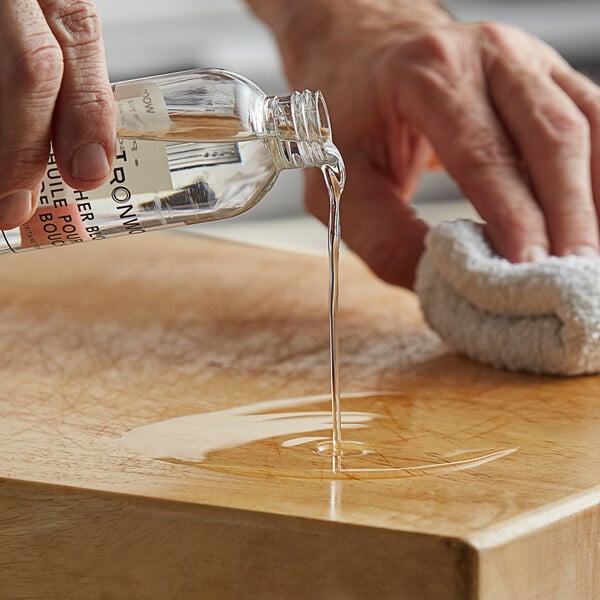
- Effective Against Pathogens: A quality sanitizer must be proven to eliminate a broad spectrum of harmful microorganisms, including bacteria, viruses, and fungi. This ensures your operation is protected against common foodborne illnesses.
- Proper Dilution Effectiveness: The sanitizer should work effectively when used according to the manufacturer’s dilution instructions. Too low a concentration can render it ineffective, while too high a concentration may pose a risk of contaminating food or damaging surfaces.
- Safe for Employees, Customers, and the Environment: A good sanitizer should be non-toxic, non-irritating, and safe for use around food, employees, and customers.
- Compliance with Regulations: The sanitizer must comply with state, federal, and local food safety regulations, including approvals from agencies like the EPA (Environmental Protection Agency) and FDA (Food and Drug Administration).
- Limits Sensory Impact on Food: A quality sanitizer should not alter the taste, smell, or appearance of food or ingredients. This is especially important for food contact surfaces and equipment.
- Leaves No Hazardous Residue: The sanitizer should not leave behind any harmful residues that could contaminate food or pose a risk to consumers.
How to Store Foodservice Sanitizers
Proper storage of foodservice sanitizers is just as important as their correct use. Storing sanitizers safely and effectively ensures they remain potent, uncontaminated, and ready for use while minimizing risks to employees, customers, and food products.
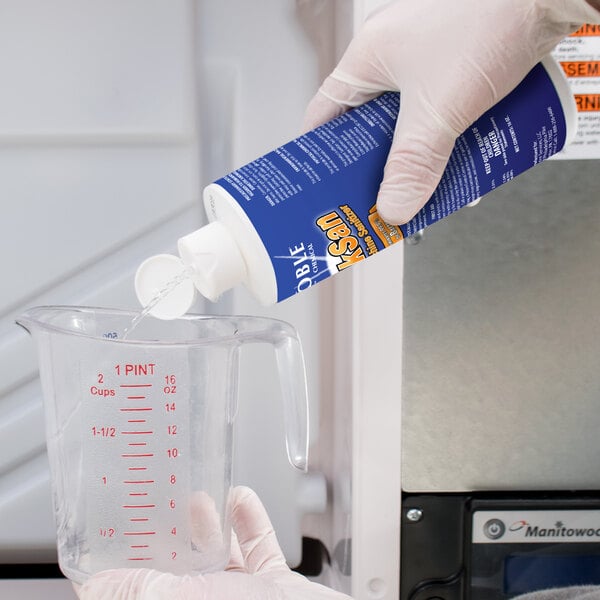
- Store in a Cool, Dry Place: Sanitizers should be kept in a cool, dry area away from direct sunlight and heat sources. High temperatures can degrade the chemicals, reducing their strength.
- Use Original or Clearly Labeled Containers: Always store sanitizers in their original containers with intact labels. If transferring to another container, ensure it is clearly labeled with the product name, concentration, and any hazard warnings.
- Keep Sanitizers Separate from Food and Utensils: Store sanitizers away from food, utensils, and food preparation areas to prevent cross-contamination. Designate a specific storage area for cleaning and sanitizing chemicals.
- Store Away from Incompatible Chemicals: Keep sanitizers separate from other chemicals, especially acids and ammonia-based cleaners, to avoid dangerous reactions.
- Follow Manufacturer’s Storage Guidelines: Always adhere to the storage instructions provided by the sanitizer manufacturer. This includes temperature ranges, shelf life, and any special handling requirements.
- Ensure Proper Ventilation: Store sanitizers in a well-ventilated area to prevent the buildup of fumes, which can be harmful to employees.
By implementing best practices for storage, usage, and monitoring, you can maximize the efficiency of your sanitizing efforts while minimizing risks. Remember, food safety is not a one-time task but an ongoing commitment. Regularly training your team, staying updated on regulations, and prioritizing proper sanitizer management will help you create a culture of cleanliness and accountability in your business.





